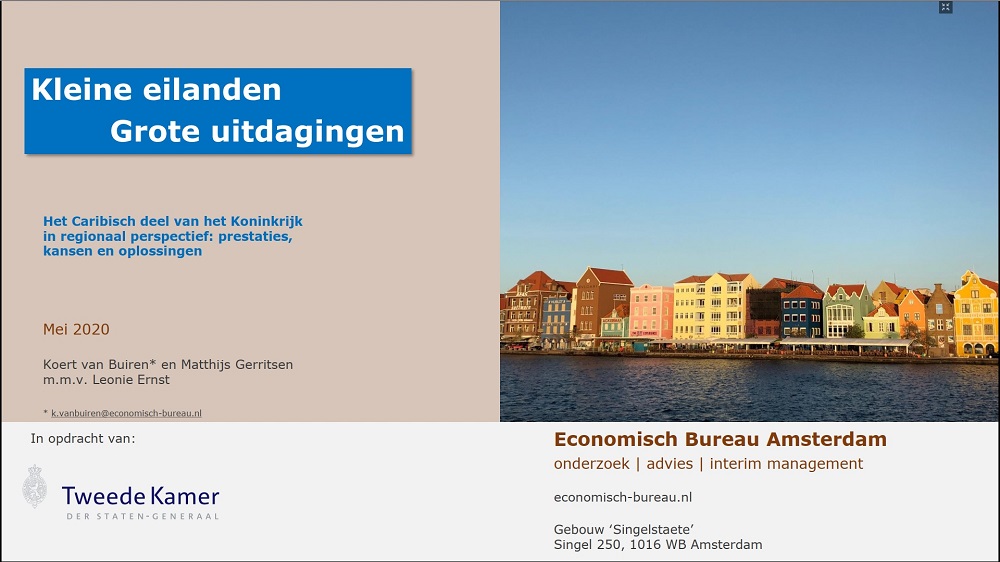Report describes St. Maarten’s “silent crisis”

PHILIPSBURG – The Economic Bureau Amsterdam produced at the request of the Dutch parliament a report about performance, opportunities and solutions for the Caribbean part of the Kingdom, entitled Small Islands, Large Challenges. It does not contain any new information but it is rather a compilation of platitudes and known facts.
Examples? “The economy of St. Maarten remains vulnerable to natural disasters,” “The International Monetary Fund advises a debt quote of 40 percent” and “It is necessary that St. Maarten takes the necessary measures to keep healthcare and social security affordable.”
The report speaks of a “silent crisis” in the Caribbean part of the Kingdom where communities are bogged down by structural vulnerabilities, low economic growth, high government debt, a vulnerable economy, a weak competitive position and no access to capital.
During the past decade, the average economic growth in the region of 0.7 percent has been “dramatic” according to the report.
A debt to gross domestic product ratio of more than 55 percent hampers economic growth according to the IMF. The corona-virus crisis was not part of the study (it covers the period October 2019 – March 2020) but St. Maarten’s debt quote – 51 percent before the crisis – is projected to skyrocket to 90 percent. A manageable debt quote is 40 percent. The average trade deficit of 8 percent (the cost of exports minus the costs of imports) does not help the economy either.
In terms of competitiveness, the islands perform poorly. According to the report, this is due to high energy costs, excessive bureaucracy, pernickety and redundant legislation, obsolete labor laws, rigid labor markets, high labor costs, a mismatch between education and the labor market and high costs of capital.
Because the islands are doing relatively well compared to their Caribbean neighbors they are considered as middle-income countries; that status limits access to bilateral and multilateral financial support and subsidies.
The report notes that 15 percent of the Caribbean population lives under the poverty line but it does not offer specific data for Curacao, Aruba, St. Maarten or the BES-islands.
Another shortcoming is the weakness of the islands’ institutions: that leads to insufficient planning, poor budgets and weak budget discipline, and to bureaucratic and legal hindrances for entrepreneurs and investors.
Neighboring islands have found solutions to boost their economy. The report mentions countries like Antigua and Barbuda and St. Kitts and Nevis that have fueled direct foreign investment through Citizenship by Investment programs.
A few other tidbits: the population of St. Maarten consists for 70 percent of migrants and the island’s CO2-emission is almost twice the regional average; this is due to the practice of generating electricity with fossil fuel. Bonaire, Statia and Saba are doing much better: these islands respectively generate 33, 45 and 17 percent of their energy needs from renewable sources.
In the past 60 years the Caribbean has been hit by 190 natural disasters. The Caribbean is “one of the most disaster prone areas in the world.”
The report recommends that St. Maarten develops a blue economy – described as the sustainable use of the natural resources in the ocean for economic growth and form the improvement of people’s livelihood. The definition of the blue economy in the report leaves out an important part of the definition: the blue economy has to preserve the health of the ocean’s eco-system.
###
Relevant links:
Report: Small Islands, Large Challenges


























